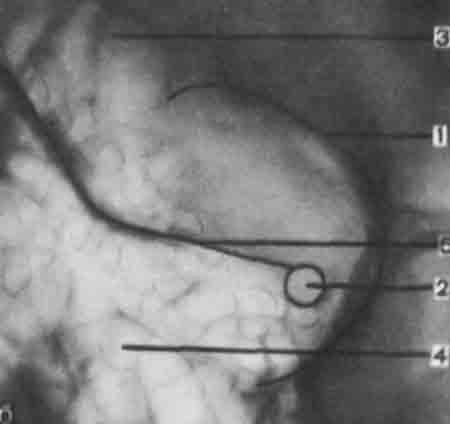Atlas Ukladok Kishkovskogo

The Atlas uses the highest performance sensors available to deliver velocity with zero latency and real-time, motion-compensated heading. Industry leading 18 Hz GPS maximizes precision and minimizes latency while a 9-axis inertial measurement unit responds to changes in motion 1600 times per second. ATLAS-I was the largest NNEMP (Non-Nuclear Electromagnetic Pulse) generator in the world, designed to test the radiation hardening of strategic aircraft systems against EMP pulses from nuclear warfare.
Written and produced by Atlas Erotika (c) guapogang 2018 DOWNLOAD/STREAM: Follow ATLAS EROTIKA Ajde budi budi mi tu zauvjek, meni se budi budi kraj tebe, a ona nosi nas u kraj, pa nek nas djavo uzme. Ajde budi budi tu zauvjek, meni se budi budi kraj tebe, a ona nosi nas u kraj, pa nek nas djavo uzme. Zeleno v listih, baby s tabo v mislih, lažen je biznis, vodka je čist bliz, gotov sm gotov, ti sam moti sam moti, lopov sm lopov, zakaj dajaš mi lobi? Vidm te zgori, sedeš za pol mi, samo uspori, sede tvoj spol mi, besna si besna k Angela Bassett, spelem te spelem, čutš moj passion? Ajde budi budi mi tu zauvjek, meni se budi budi kraj tebe, a ona nosi nas u kraj, pa nek nas djavo uzme.
Ajde budi budi tu zauvjek, meni se budi budi kraj tebe, a ona nosi nas u kraj, pa nek nas djavo uzme. Vidm da me prati fakin Djavo, k mi da šejk ji ploskam, rečem bravo, sam pr seb vem da pač to ni to, sam cami vikend, sam v vikend z njo, ma sam cel vikend, sam cel vikend kat z njo, no sikiriki mam v glavi s tabo, me vidš, slišš, sam še dihi z mano, ma sam cel vikend, sam cel vikend za njo. Rangkaian arus listrik ac pdf download.
Instrukciya k elektricheskoj plite elenberg. Ajde budi budi mi tu zauvjek, meni se budi budi kraj tebe, a ona nosi nas u kraj, pa nek nas djavo uzme. Ajde budi budi tu zauvjek, meni se budi budi kraj tebe, a ona nosi nas u kraj, pa nek nas djavo uzme.
Launch of the maiden flight of the Atlas I, with the satellite Function Manufacturer Country of origin United States Size Height 43.90m (144.00 ft) Diameter 3.05m (10 ft) Mass 164,300kg (362,200 lb) Stages 2.5 Associated rockets Family Launch history Status Retired Launch sites, Total launches 11 Successes 8 Failures 3 First flight July 25, 1990 Last flight April 25, 1997 The Atlas I was an American, used in the 1990s to launch a variety of different satellites. The 'I' in 'Atlas I' can cause confusion, as all previous Atlas rockets were designated using letters, ending with the Atlas H, however subsequent rockets were designated using Roman numerals, starting with the.
Officially, the 'I' is the Roman numeral '1'. Eleven launches took place, with three failures. Though the Atlas I was marketed as a new rocket, it was more just a re-brand of the Atlas G/H for commercial payloads, while the Atlas G and H were mostly private. Atlas I was the last use of the classic Atlas design with three engines, jettisonable booster section, and two vernier engines, as Atlas II, while retaining most of those features, replaced the verniers with a roll control system. Launch history [ ] Date/Time (GMT) Serial Number Payload Outcome Remarks Atlas Centaur July 25, 1990, 19:21 AC-69 5049 Successful Maiden flight of Atlas I, spacecraft later failed April 18, 1991, 23:30 AC-70 5050 Failure Due to management' s schedule and cost pressure, engineers made a quick but wrong conclusion that One Centaur engine failed to start due to debris lodged in the LH2 turbopump.

RSO destruct at T+441 seconds. The real problem was LH2 mixing with atmospheric nitrogen to form a plug of solid nitrogen in a Centaur engine valve. This resulted in the engine not developing thrust and the twin engine Centaur tumbled out of control. The problem would resurface again in Atlas AC-71. March 14, 1992, 00:00 AC-72 5052 Successful August 22, 1992, 22:40 AC-71 5051 Failure Centaur engine failure followed by RSO destruct. Just like the 1991 launch, this incident was caused by LH2 mixing with atmospheric nitrogen to form a plug of solid nitrogen in a Centaur engine valve. The condition was caused by an experimental procedure to increase performance by cooling the Centaur engines prior to ignition.
The procedure was not fully tested under flight like conditions. This time management gave full authority to examine every possible cause until the root was found. March 25, 1993, 21:38 AC-74 5054 Failure An improperly torqued set screw caused the Atlas sustainer engine to drop to 75% thrust starting at T+25 seconds. By booster staging at T+120 seconds, sustainer thrust was down to 60%.
The payload was placed in an unusable orbit. This was the last failed launch involving an Atlas vehicle. September 3, 1993, 11:17 AC-75 5055 (USA-95) Successful April 13, 1994, 06:04 AC-73 5053 (GOES-8) Successful June 24, 1994, 13:50 AC-76 5056 (USA-104) Successful May 23, 1995, 05:52 AC-77 5057 (GOES-9) Successful April 30, 1996, 04:31 AC-78 5058 Successful April 25, 1997, 05:49 AC-79 5059 (GOES-10) Successful Final flight of Atlas I See also [ ] • References [ ].